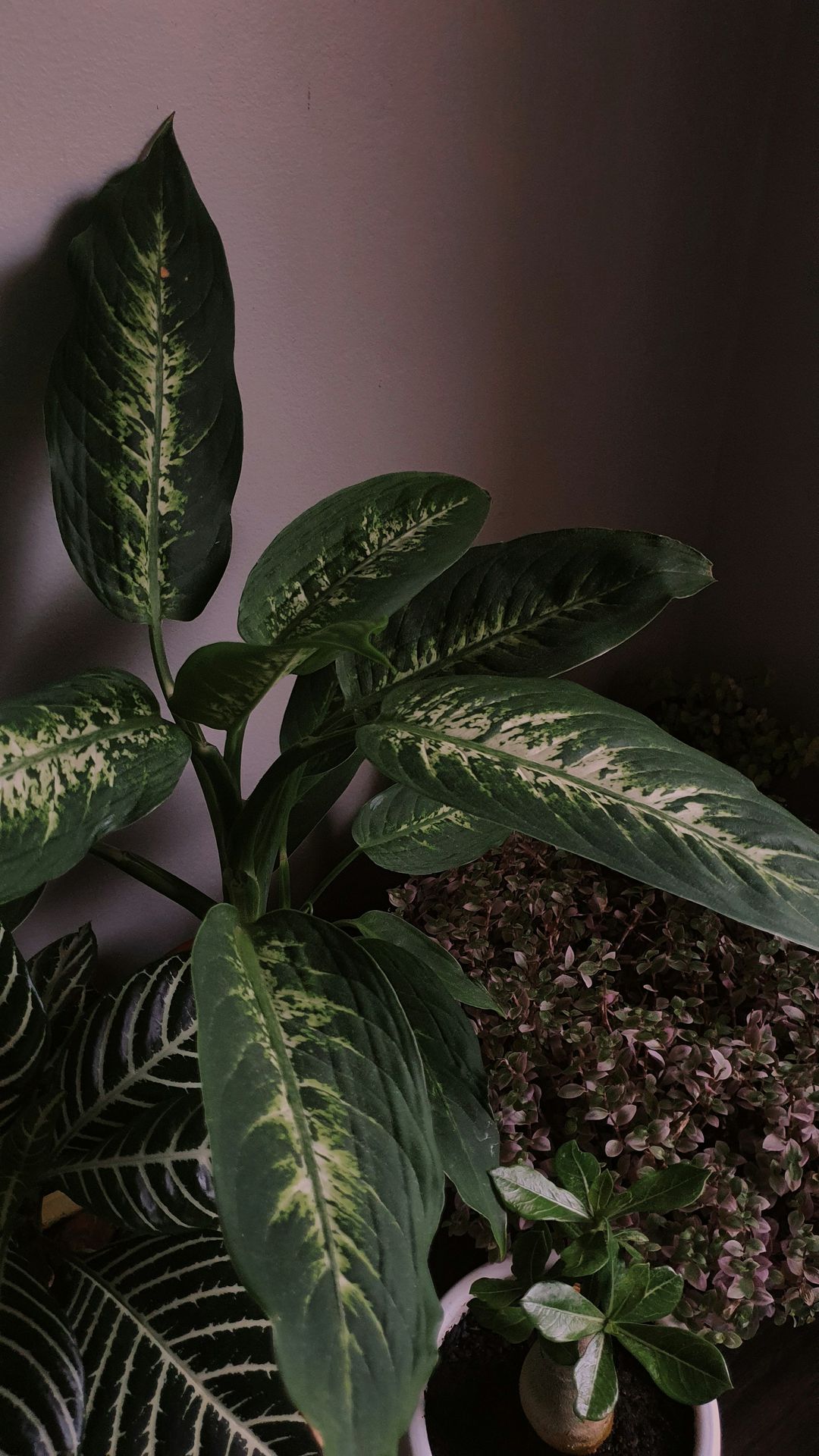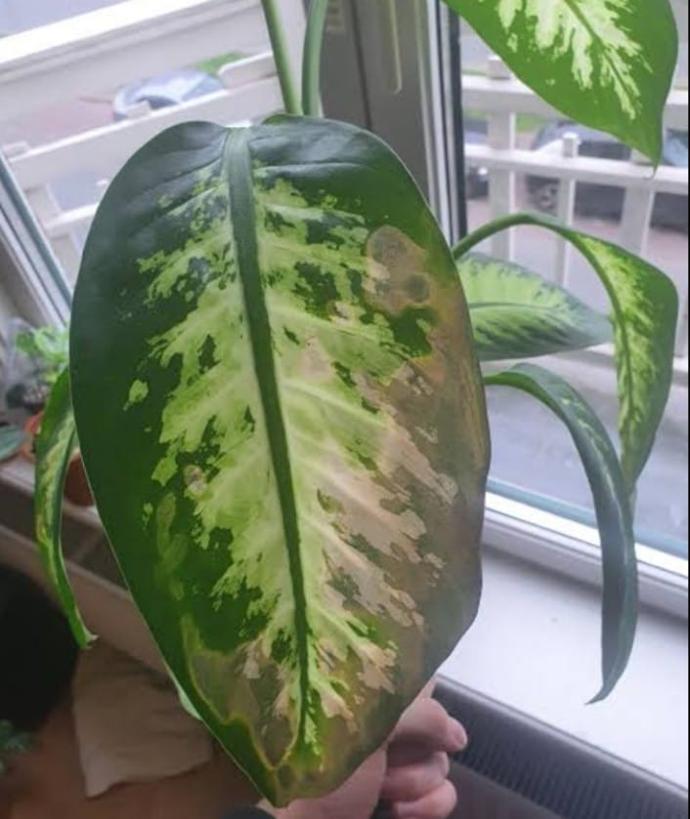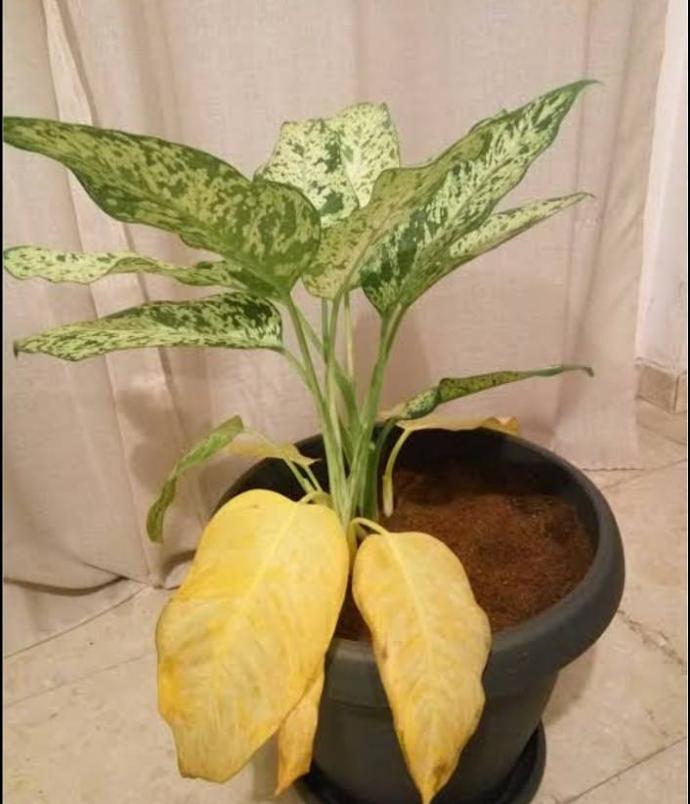Dieffenbachia Plant
Dieffenbachia, also known as Dumb Cane, is an indoor plant with large, variegated leaves. Plant in well-draining soil and provide bright, indirect light. Allow the soil to partially dry between waterings. Pruning helps control its size and remove unwanted leaves.

Habit
Perennial
Height
50 to 150 cm
Growth
Moderate
Soil
Well-drained, peat-based
Shade
Indirect light to shade
Moisture
Moist
Edible
No
Medicinal
No
Origin
South America
Climatic Condition
Tropical, humid
Temperature (°)
18 to 30
Humidity (%)
60 to 90
Potting media
Peat-perlite mix
Fertilizers
High nitrogen, organic mix
Watering
Regular misting, moderate
Plant Weight
200 to 800 g
Flowering Time
Non-flowering
Soil Ph level
5.5 to 6.5
Water Ph level
6.0 to 7.0
Soil EC
0.4 to 1.2
Yield Per Plant
Ornamental
NPK ratio
20:20:20
life Span
Perennial
Health Benefits
Air purifier, popular houseplant.
Suggested Grow Media or Potting Mix ?
50% peat moss, 30% perlite, 20% compost
Suggested Fertigation/Fertilizers
Fertilize every 2 weeks with a balanced, water-soluble fertilizer.
Common Diseases and Remedies
Stunted leaf growth, Yellow stem, Brown spot
Leaves stop growing, leaves remains smaller than the normal size. Leaves and stem turn yellow.
Over Irrigation should be avoided.
Trichoderma fungicide can be sprayed in 15 days of interval with 2-4 applications.
HEALTH BENEFITS
· Primarily known for its air-purifying abilities, helping remove toxins from indoor air.
· Caution: Dieffenbachia is toxic if ingested, causing irritation, swelling, and difficulty swallowing. Not used medicinally due to its toxicity.
What Is An Dieffenbachia Tree?
Dieffenbachia, also known as dumb cane or leopard lily, is a tropical flowering plant that is native to South America and the West Indies. It is a perennial herbaceous plant with a straight stem and simple, alternate leaves that contain white spots and flecks. Dieffenbachia is a popular houseplant due to its shade tolerance and attractive foliage. They grow in almost any room and are easy to grow.

What Are The Different Types Of Dieffenbachia Plants?
1. Camouflage
Dark green leaves.
2. Compacta
Compact plant.
3. Snow
A large-growing variety with dark green leaves and silvery-white or cream-colored spots.
4. Starbright
Has pink leaves.
5. Tropic Marianne
Marble colored leaves.

How to care for Dieffenbachia Plants ?
1. Location
Dieffenbachia plants prefer temperatures between 60 and 80°F. Avoid sudden temperature changes and cold wind.
2. Sunlight
Dieffenbachia plants prefer bright indirect light or partial shade. They tolerate full shade.
3. Hydration
Water Dieffenbachia plants once or twice a week, or less often during colder months. Water the plant when the top 1 inch of soil is slightly dry.
4. Soil
Plants grow in soil that retains moisture and is well-drained. A high-quality potting mix that contains nitrogen is great for promoting healthy foliage and growth.
5. Nutrition
Fertilize dieffenbachia once a month in spring and summer with diluted houseplant fertilizer. You can also mix fertilizer with water. For example, use Espoma's organic indoor plant fertilizer.

6.Issues
Nitrogen deficiency: Leaves may turn yellow, be smaller than normal, and have short internodes. Plant development may be stunted and leaves may become misshapen.
Virus: Symptoms include yellowing of leaves, smaller than normal leaves, and short internodes. Some varieties may die within a month after infection.
Brown tips: Uneven watering may cause the tips of the leaves to turn brown.
What are the Benefits of Dieffenbachia Plants ?
Stress Relief: Dieffenbachia plants reduce stress and promote calmness.
Health Benefits: The air purifying properties of the dieffenbachia plant can help with headaches, allergies, and respiratory problems.
Air Quality: Dieffenbachia plants help purify indoor air by filtering out harmful volatile organic compounds (VOCs). Shrub sugarcane plants planted in 6-inch pots can purify the air around you up to 100 feet away.

FAQs About Growing Dieffenbachia
1.How do I care for a Dieffenbachia plant?
Dieffenbachia plants prefer bright, indirect light and can tolerate lots of indirect sunlight.
2.Does Dieffenbachia need a lot of water?
You'll want to water your dumb cane once or twice per week.
3.What is the risk of Dieffenbachia?
Dieffenbachia plant can cause vital signs, such as airway obstruction and respiratory failure, as well as mild skin reactions.
4.What is the climate for Dieffenbachia?
Dieffenbachia respond well to hot temperatures and dry climates.
5.Does Dieffenbachia purify the air?
Dieffenbachia plants are great for improving indoor air quality because the large leaves are highly efficient at filtering out pollutants.

